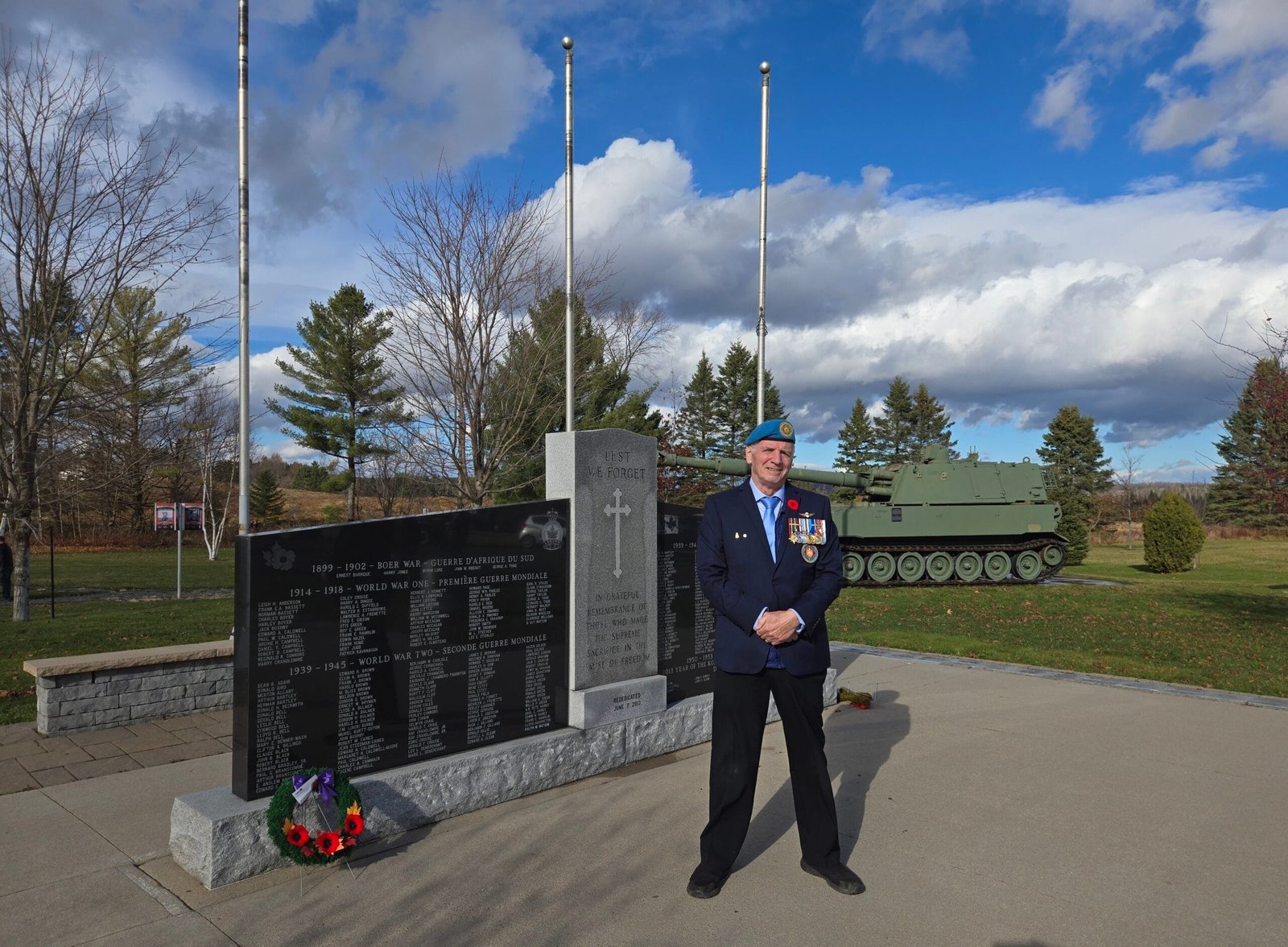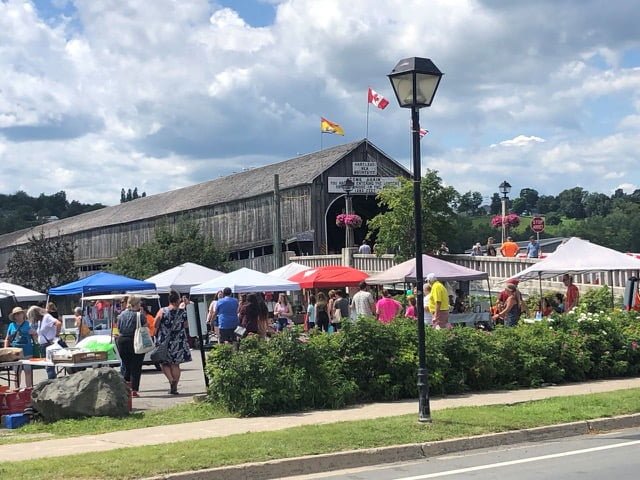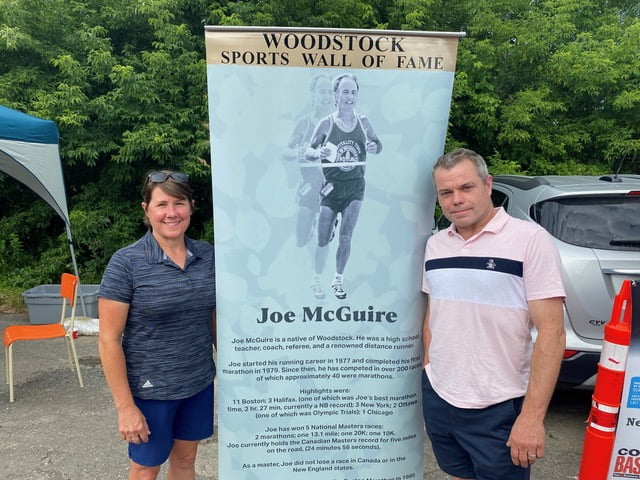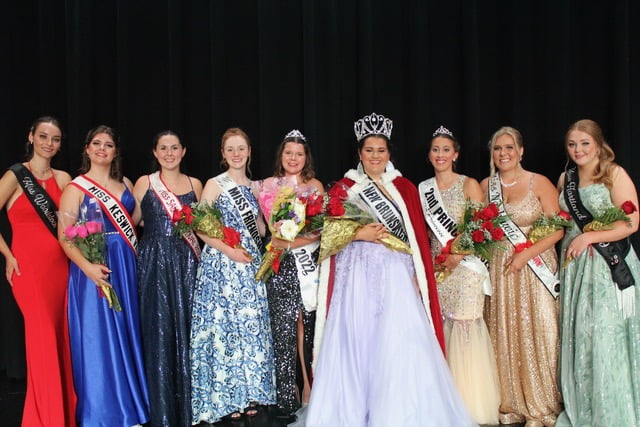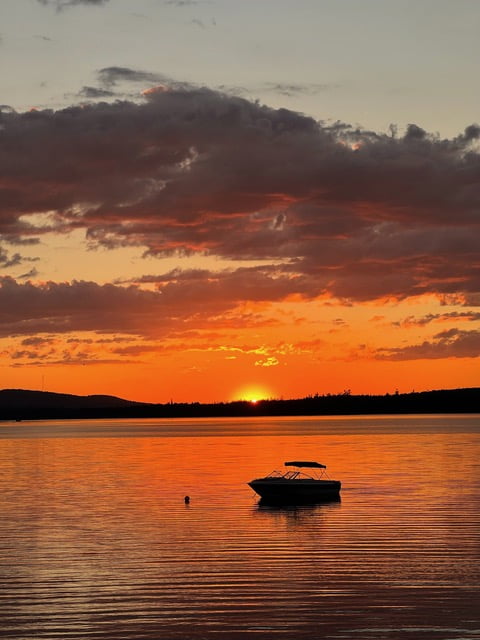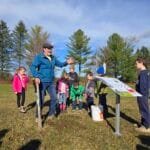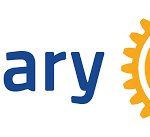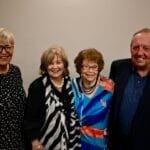‘Remember us and tell our stories’ – veteran Harold Skarrup
On Nov. 8, residents of the District of Carleton North came together to celebrate the ceremonial planting of a Vimy Ridge oak tree at the Centreville cenotaph.
The tree, a direct descendant of the oak trees that grew on Vimy Ridge during the First World War, now stands in honour of all those who fought in that infamous battle.
After the ceremony, local veteran Harold Skarrup captivated the crowd with a heartfelt speech. As he reflected on his years of military service, Skarrup urged everyone to ensure that stories of service continue to be told.
“I started off in the militia like a lot of people do. I ended up going off to do training and joined the Canadian Forces Parachute team, the SkyHawks. I completed a couple of tours in Germany, and then they sent me to Cyprus, Bosnia, and Afghanistan. Then they started lending me to the Air Force for a little while, and I was with NORAD in Colorado.
The whole point of a lot of what we did was making history. I made it my hobby to write about it and tell the stories. My grandfather fought in the First World War, in Passchendaele, Vimy Ridge, and Hill 70. I asked him about that when I was a boy, and he said, “You know people talk about Passchendaele, but I can’t. We had 14 men on the guns, and every time a man got killed, we’d replace them – we went through 49 soldiers in a 14-man gun detachment. Just in that one battle.” The fact that he got back home to Carleton County to tell me about it is the greatest gift our family has ever had. People today can’t imagine that.
My aunt also wrote about veterans and their experiences. A number of them had been to Hong Kong in 1941, the largest battle we were engaged in before V-day. Most people don’t realize that 1925 Canadians went to Hong Kong, and so many of them were killed or taken prisoner. What they also don’t know is that 400 of them came from here – a huge number of Carleton County people served over there. Yet, has anybody ever heard of the Battle of Hong Kong? Why do we forget? Why did we lose that [piece of history]?
[In 2001], I was in Colorado on loan to the Air Force. I was inside getting ready to brief people about what was going to take place for a tactical exercise. There were two television screens behind me as I was preparing to make my presentation. That’s when we all saw those airplanes fly into the World Trade Centre towers. [I remember] the general in charge, who was Canadian at the time, said, “I think the exercise is over.” All of us in the room were looking around at each other, and we knew that sooner or later, we were going over there, wherever that had come from.
When I got back to Canada, within six months, I was in Kabul, Afghanistan. You may not see it, you may not hear it, and you may not think it, but we made a difference. Kids couldn’t go to school, and certainly not girls, when we got there. We disarmed the warlords and we took away their weapons. We made it possible for those children to go back to school – a million and a half of them. We made a difference; I physically saw it, and we made that difference for more than 20 years.
Yes, it’s gone back to the way things were in some instances, but those people, those children who have grown up, now know that there is a better way, and they wouldn’t have known that if we weren’t there to try and make it happen.
If you want to know how you can make a difference in the world, it’s to be part of the families who support us as we go over and fight our missions. Without you, we couldn’t do that. It’s also important that you tell the stories of what we do. So, from the bottom of my heart, on behalf of all of us as veterans, thank you for your support and for appreciating us, because we couldn’t do it without you.”

